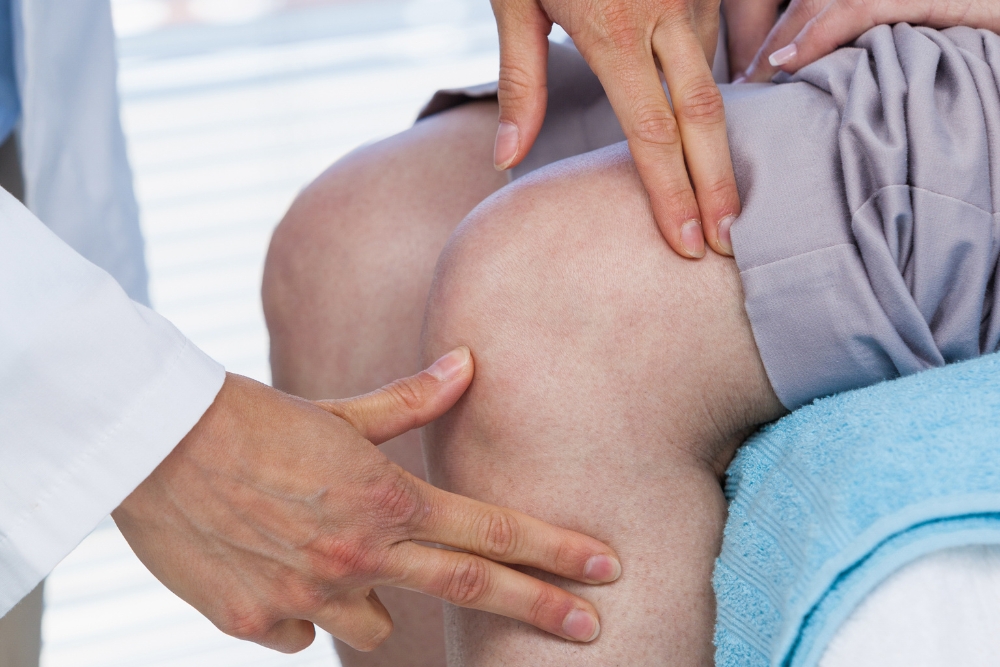Everything You Need To Know About Knee Pain
Knee pain affects millions of people worldwide and can significantly impact daily activities, from walking and climbing stairs to participating in sports and recreational activities. Understanding the underlying causes, recognizing symptoms early, and implementing effective management strategies are crucial steps toward maintaining healthy knees and improving quality of life. Whether you're dealing with acute injury-related discomfort or chronic conditions, comprehensive knowledge about knee pain treatment options can help you make informed decisions about your health and recovery.

What Are the Primary Causes of Knee Pain?
Knee pain can stem from various sources, ranging from sudden injuries to gradual wear and tear. Acute injuries commonly include ligament tears such as ACL or MCL injuries, meniscus tears, and fractures resulting from sports activities or accidents. Overuse injuries frequently affect runners and athletes, leading to conditions like patellofemoral pain syndrome, IT band syndrome, and tendinitis.
Degenerative conditions represent another major category of knee pain causes. Osteoarthritis, the most common form of arthritis, occurs when cartilage gradually breaks down over time. Rheumatoid arthritis, an autoimmune condition, can also affect knee joints. Additionally, conditions like bursitis, gout, and baker’s cysts can contribute to knee discomfort. Age-related factors, obesity, previous injuries, and genetic predisposition can increase the likelihood of developing these conditions.
How to Recognize Signs and Symptoms of Knee Pain
Understanding the various manifestations of knee pain helps individuals seek appropriate treatment promptly. Pain intensity can range from mild discomfort to severe, debilitating sensations that interfere with daily activities. The location of pain provides important clues about underlying conditions - front knee pain often indicates patellofemoral issues, while side pain may suggest ligament problems.
Swelling and stiffness frequently accompany knee pain, particularly in inflammatory conditions. Joint instability, characterized by the knee “giving way” or feeling unstable during movement, may indicate ligament damage. Mechanical symptoms such as clicking, popping, or grinding sounds during movement can signal cartilage problems or meniscus tears. Limited range of motion, difficulty bearing weight, and visible deformity represent more serious symptoms requiring immediate medical attention.
Effective Knee Pain Management and Its Remedies
Comprehensive knee pain management typically involves a multi-faceted approach combining conservative treatments, lifestyle modifications, and when necessary, medical interventions. The RICE protocol - Rest, Ice, Compression, and Elevation - remains a cornerstone of acute injury management, helping reduce inflammation and pain in the initial stages.
Physical therapy plays a crucial role in knee pain treatment, focusing on strengthening surrounding muscles, improving flexibility, and restoring proper movement patterns. Quadriceps and hamstring strengthening exercises help stabilize the knee joint, while low-impact activities like swimming and cycling can maintain fitness without excessive joint stress. Weight management significantly impacts knee health, as excess body weight increases pressure on knee joints during daily activities.
| Treatment Type | Provider/Method | Estimated Cost Range |
|---|---|---|
| Physical Therapy | Outpatient clinics, hospitals | $75-$150 per session |
| Orthopedic Consultation | Specialists, medical centers | $200-$500 initial visit |
| MRI Imaging | Diagnostic centers, hospitals | $1,000-$3,000 |
| Cortisone Injections | Orthopedic clinics | $100-$300 per injection |
| Knee Replacement Surgery | Hospitals, surgical centers | $35,000-$70,000 |
Prices, rates, or cost estimates mentioned in this article are based on the latest available information but may change over time. Independent research is advised before making financial decisions.
Non-prescription pain medications, including NSAIDs like ibuprofen and naproxen, can help manage inflammation and discomfort. Topical treatments such as menthol-based creams or capsaicin gels provide localized relief for some individuals. Alternative therapies including acupuncture, massage therapy, and chiropractic care have shown benefits for certain types of knee pain.
For persistent or severe cases, medical interventions may become necessary. Corticosteroid injections can provide temporary relief for inflammatory conditions, while hyaluronic acid injections may help with osteoarthritis symptoms. Severe cases involving significant structural damage may require surgical interventions ranging from arthroscopic procedures to partial or total knee replacement surgery.
Prevention and Long-Term Management Strategies
Preventing knee pain involves adopting lifestyle habits that promote joint health and reduce injury risk. Regular exercise focusing on low-impact activities helps maintain joint mobility and surrounding muscle strength. Proper warm-up and cool-down routines before physical activities can prevent acute injuries.
Maintaining healthy body weight reduces mechanical stress on knee joints, while wearing appropriate footwear provides adequate support and cushioning. Workplace ergonomics and proper body mechanics during daily activities help prevent overuse injuries. For individuals with chronic conditions, working with healthcare providers to develop personalized management plans ensures optimal long-term outcomes.
Early intervention remains key to successful knee pain treatment. Recognizing symptoms promptly and seeking appropriate care can prevent minor issues from developing into more serious conditions requiring extensive treatment. Regular check-ups with healthcare providers, particularly for individuals at higher risk due to age, activity level, or family history, can help identify potential problems before they become symptomatic.
Understanding knee pain causes, symptoms, and treatment options empowers individuals to take proactive steps toward maintaining healthy joints throughout their lives. Whether dealing with acute injuries or chronic conditions, comprehensive management approaches combining conservative treatments, lifestyle modifications, and professional medical care offer the best outcomes for long-term knee health and function.
This article is for informational purposes only and should not be considered medical advice. Please consult a qualified healthcare professional for personalized guidance and treatment.




